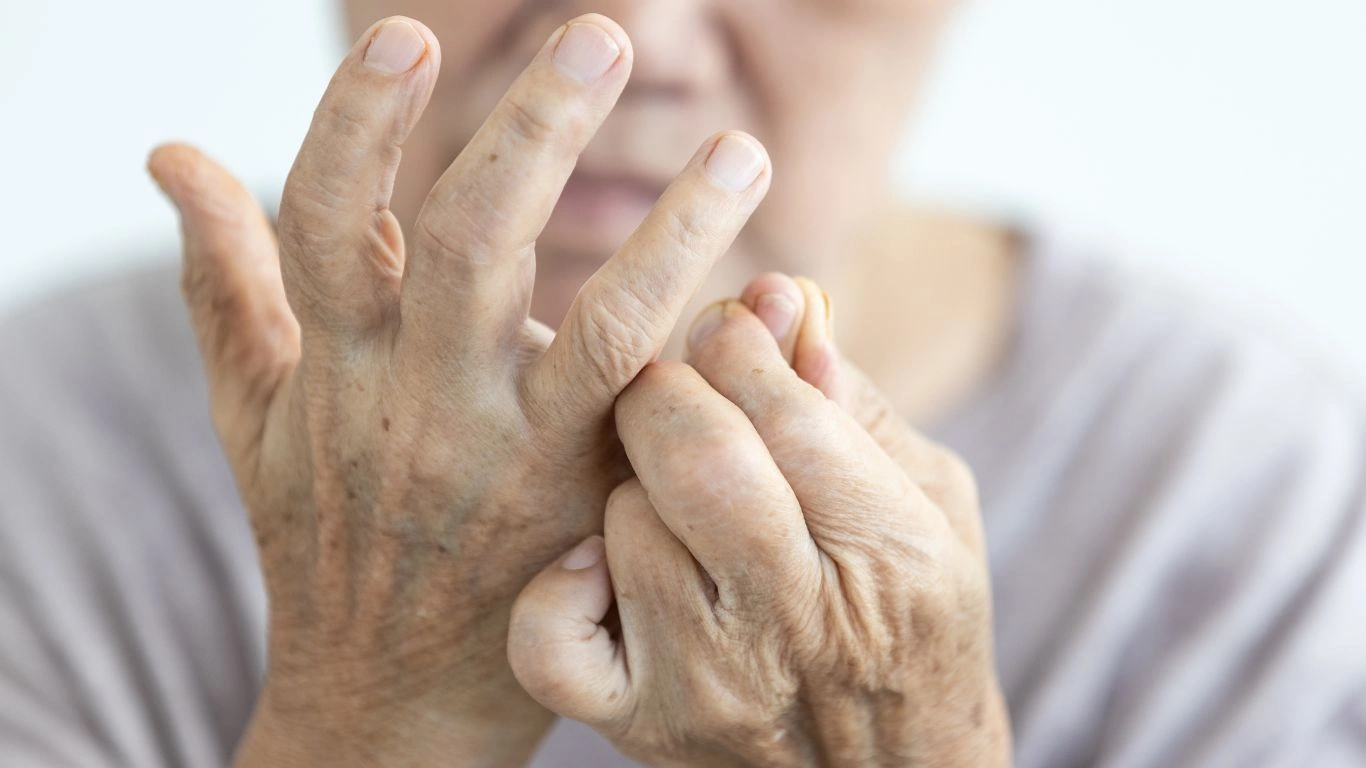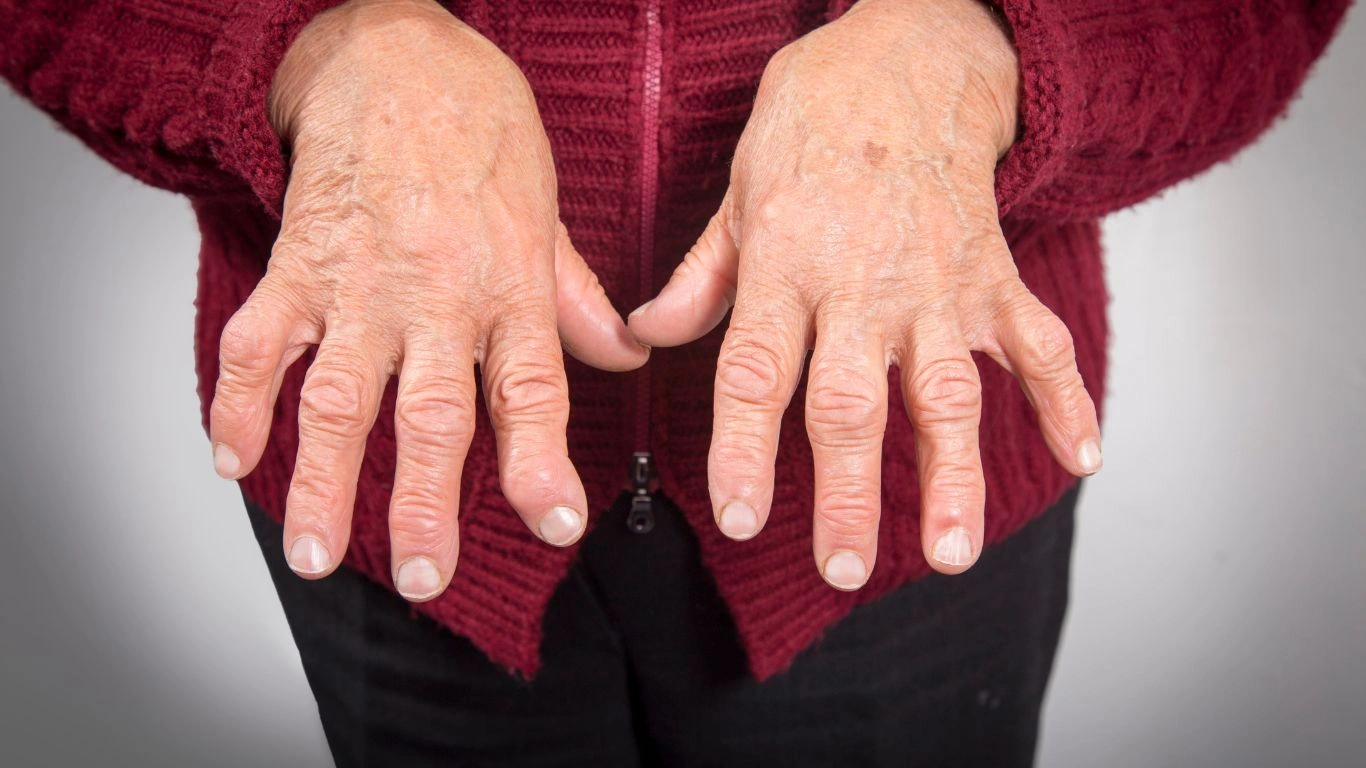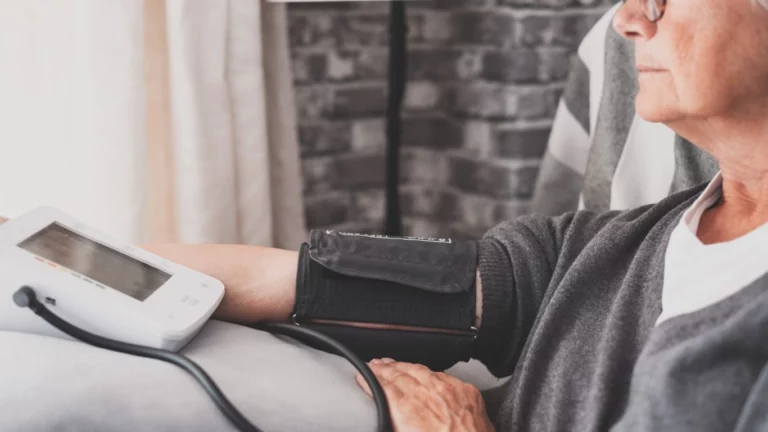Can Rheumatoid Arthritis Cause Chronic Back Pain? Discover Proven Solutions for Relief
If you or someone you love is living with rheumatoid arthritis (RA), you’ve probably wondered at some point if it could be causing chronic back pain. I get it—RA can be a tricky condition to navigate, and sometimes, the symptoms aren’t just about swollen joints and stiffness in the hands or knees. As a specialist, I’ve worked with countless individuals who experience chronic back pain as part of their RA journey, but many are surprised to learn that this type of pain is actually quite common for people with the condition. So, let’s dig into this question: Can rheumatoid arthritis cause chronic back pain?
Understanding Rheumatoid Arthritis and Its Impact on the Body
Rheumatoid arthritis is a chronic autoimmune condition where the body’s immune system mistakenly attacks the joints. The damage is often gradual but can become severe over time, leading to pain, inflammation, and disability. The most common symptoms include swelling, stiffness, and pain, particularly in the hands, wrists, knees, and feet.

RA typically affects the smaller joints first, but it can progress to involve other joints in the body, including those in the spine. In fact, the spine—particularly the cervical (neck) and lumbar (lower back) regions—can be significantly affected by this condition. When the inflammation in the joints of the spine becomes chronic, it can lead to a variety of symptoms, including back pain.
It’s important to note that while RA can cause back pain, it’s not the same as mechanical back pain or pain due to degenerative conditions like arthritis of the spine (osteoarthritis). The inflammation caused by RA can directly affect the spine, leading to a unique form of chronic back pain that can be tricky to diagnose and manage.
How Does RA Lead to Chronic Back Pain?
The connection between rheumatoid arthritis and chronic back pain is complex. To understand why this happens, let’s break it down a bit. RA causes the immune system to attack the lining of the joints, which includes the spinal joints. This leads to inflammation, which can make the joints stiff and painful. Over time, chronic inflammation can damage the cartilage and bones in the spine, resulting in long-lasting pain and discomfort.
But that’s not all. The inflammation can spread to the ligaments and tendons that support the spine, causing them to become weaker and less flexible. This can create instability in the spine, further exacerbating back pain. In some cases, the inflammation can even cause nerve compression, which leads to radiating pain down the legs or arms.

Chronic back pain in RA patients can present itself in different ways depending on where the inflammation is occurring. Some may experience constant, dull pain in the lower back, while others might feel sharp, shooting pain that radiates down their legs (sciatica). The pain can vary in intensity and may worsen with activity, but what’s most frustrating for many people with RA is that the back pain can be unpredictable, flaring up during periods of inflammation or stress.
Which Areas of the Spine Are Most Affected by Rheumatoid Arthritis?
Rheumatoid arthritis most commonly affects two main regions of the spine: the cervical (neck) and lumbar (lower back) areas. However, other parts of the spine, such as the thoracic (mid-back) region, can also be impacted. Let’s dive into the specifics of how RA can affect these areas:
Cervical Spine (Neck)
The cervical spine is particularly vulnerable to RA. Inflammation here can lead to severe neck pain and stiffness, and in some cases, it can affect the nerves that exit the spinal cord. This can result in symptoms like numbness, tingling, or weakness in the arms and hands. Some patients may even experience headaches or dizziness due to the involvement of the upper cervical joints.
Lumbar Spine (Lower Back)
The lumbar spine, which supports the weight of the body, is also frequently affected by RA. Inflammation in this area can cause pain, especially in the lower back. This type of back pain can be persistent and worsen with prolonged sitting or standing. Some people may also experience a reduced range of motion, which can limit their ability to move freely.
Interestingly, the sacroiliac joints—the small joints located at the base of the spine where the sacrum and pelvis meet—can also be affected by RA. Inflammation here can lead to significant lower back pain and stiffness. This is often mistaken for sciatica or other forms of lower back pain, but it’s important to distinguish between the two, as the treatment approaches differ.

Thoracic Spine (Mid-Back)
Although less commonly affected, the thoracic spine can also experience inflammation in people with rheumatoid arthritis. The inflammation in the mid-back may lead to pain and discomfort in the chest, ribcage, and upper back area. The pain might be less noticeable than in the cervical or lumbar regions, but it can still impact a person’s quality of life, especially if the inflammation causes stiffness or restricts movement.
Common Symptoms of Chronic Back Pain in RA
If you’re dealing with chronic back pain as part of your rheumatoid arthritis, it’s crucial to understand how the symptoms might manifest. As with any RA symptoms, back pain can vary widely from person to person, but there are some common signs to look out for:
- Persistent pain: A dull, aching pain that doesn’t go away with rest, especially in the lower back or neck.
- Stiffness: You may feel stiff when you wake up or after sitting for long periods, making it harder to move around.
- Limited range of motion: As inflammation progresses, you might notice that it’s harder to turn your neck or bend your lower back.
- Radiating pain: Nerve compression can cause pain that shoots down the legs or arms, similar to sciatica.
If you’re noticing any of these symptoms, it’s essential to work closely with your healthcare provider to ensure that RA is the underlying cause. In some cases, early intervention can help manage the pain and prevent further damage.
How Chronic Back Pain in RA Is Diagnosed
So, you’re dealing with back pain and wondering if it’s linked to rheumatoid arthritis. The next step is getting an accurate diagnosis. While RA-related back pain can be tough to pinpoint, healthcare professionals use a combination of methods to get to the bottom of it. Here’s a little insight into how the diagnosis process typically works from my experience in the field.
Medical History and Physical Exam
The first thing your doctor will do is ask about your medical history. They’ll want to know how long you’ve been experiencing back pain, its intensity, and if it’s impacting your daily activities. Be ready to share details about your rheumatoid arthritis symptoms, such as joint pain, stiffness, and flare-ups. Don’t hold back, as even seemingly small symptoms could give your doctor critical clues about your condition.
During the physical exam, your healthcare provider will assess your range of motion, the location of your pain, and any signs of inflammation in the joints. They may ask you to perform certain movements to see how your back responds to stress. A key part of diagnosing RA-related back pain is determining if inflammation is involved, which will usually feel different from typical mechanical back pain.

Imaging Tests
Once your doctor has a clearer picture from your medical history and physical exam, the next step often involves imaging tests. X-rays, MRIs, and CT scans are commonly used to assess the spine and check for signs of joint inflammation, damage, and any structural changes in the bones.
An MRI, in particular, is excellent for detecting soft tissue issues like inflammation in the ligaments and tendons around the spine, something that might not show up clearly on an X-ray. It’s also helpful for spotting signs of nerve compression that can contribute to back pain. X-rays, on the other hand, can reveal joint damage or deformities typical of RA, helping to differentiate it from other causes of back pain.
Blood Tests for Rheumatoid Arthritis
To confirm whether rheumatoid arthritis is contributing to your chronic back pain, your doctor will likely order blood tests. The most common test is the rheumatoid factor (RF) test, which looks for certain antibodies that are often present in people with RA. Another important test is the anti-cyclic citrullinated peptide (anti-CCP) antibody test, which is more specific to RA.
Elevated levels of inflammation markers, such as C-reactive protein (CRP) or erythrocyte sedimentation rate (ESR), can further indicate the presence of active inflammation in your body. If your blood tests come back positive for these markers, it’s more likely that your back pain is linked to RA.
Managing Chronic Back Pain Caused by Rheumatoid Arthritis
Now that you know how RA can contribute to chronic back pain, let’s dive into managing it. Dealing with back pain day in and day out can be draining, but with the right approach, it’s entirely possible to manage symptoms and improve your quality of life. I’ve seen firsthand how effective the right treatments and lifestyle changes can be for individuals living with RA and back pain.
Medications for Rheumatoid Arthritis and Back Pain
Managing back pain from rheumatoid arthritis typically starts with medication. The main goal is to reduce inflammation and prevent further joint damage. Some common medications used include:
- Nonsteroidal anti-inflammatory drugs (NSAIDs): These help to reduce inflammation and pain. Ibuprofen and naproxen are common over-the-counter options, but your doctor may prescribe stronger NSAIDs if needed.
- DMARDs (Disease-Modifying Antirheumatic Drugs): These drugs, like methotrexate, can help slow down the progression of RA by targeting the underlying immune response that causes inflammation in the joints.
- Biologic agents: Biologic drugs, such as TNF inhibitors (like etanercept or adalimumab), target specific parts of the immune system that trigger inflammation and are typically used when other treatments don’t work.
- Corticosteroids: In more severe cases, doctors may recommend short-term use of corticosteroids like prednisone to reduce inflammation quickly. However, long-term use is usually avoided due to potential side effects.

Keep in mind that the goal of these treatments is not just to ease your back pain but also to prevent long-term damage to your joints. It’s about controlling inflammation before it leads to permanent wear and tear on your spine and other joints.
Physical Therapy and Exercise
One of the most effective ways to manage back pain related to RA is through physical therapy and exercise. Physical therapists are trained to create customized exercise programs that can help strengthen the muscles around your spine, increase flexibility, and improve your posture. This not only helps reduce pain but also lowers the risk of future injury.
Regular, low-impact exercises—such as swimming, walking, or biking—can be particularly beneficial. These activities are easy on the joints but still promote mobility and muscle strength. Just be sure to talk to your healthcare provider before starting a new exercise program to make sure it’s safe for your specific situation.
Heat and Cold Therapy
Heat and cold therapy are simple, yet effective, ways to relieve pain and stiffness in the back. Applying a heating pad or hot compress can help relax tense muscles, increase blood flow, and reduce stiffness. On the flip side, cold packs can be used to numb the area and reduce inflammation and swelling, which is especially helpful during flare-ups.
Alternating between heat and cold throughout the day can provide significant relief, especially if you’re dealing with both stiffness and swelling in your back. It’s an easy way to complement your other treatment strategies.
Dietary Adjustments and Lifestyle Changes
Your diet and lifestyle play a huge role in managing rheumatoid arthritis and related symptoms like chronic back pain. Although there’s no “one-size-fits-all” diet for RA, anti-inflammatory foods can be particularly helpful. Omega-3 fatty acids, found in fatty fish like salmon and sardines, can reduce inflammation, while antioxidant-rich foods like fruits and vegetables help fight oxidative stress in the body.
Maintaining a healthy weight is another crucial aspect of managing back pain. Excess weight puts additional strain on the spine, worsening pain and inflammation. By eating a balanced diet and staying active, you can help keep your body in a better position to manage RA and its symptoms.
The Importance of a Holistic Approach to Treatment
Managing chronic back pain from rheumatoid arthritis isn’t just about medications or physical therapy alone—it’s about taking a holistic approach that addresses your physical, emotional, and mental health. Living with RA and back pain can be mentally and emotionally taxing, so it’s important to focus on overall well-being. Support groups, counseling, and mindfulness techniques like meditation can help you cope with the challenges of living with chronic pain.
In my experience, when people with RA take a proactive approach to their treatment plan—including regular check-ins with their healthcare team, proper self-care, and lifestyle adjustments—they tend to experience better outcomes. So, if you’re struggling with back pain due to rheumatoid arthritis, remember that there’s no one-size-fits-all solution, but with the right combination of treatments, you can find relief.
Living with Rheumatoid Arthritis and Chronic Back Pain: Coping Strategies
Dealing with rheumatoid arthritis (RA) and the chronic back pain that often accompanies it can feel overwhelming at times. But here’s the thing: you don’t have to face it all on your own. Over the years, I’ve worked with many individuals who have found ways to adapt and live full, active lives despite their chronic pain. It takes a bit of patience, the right mindset, and a proactive approach, but it’s absolutely possible. So, let’s explore some practical coping strategies that can make a world of difference in managing chronic back pain due to RA.
Understanding Your Pain Triggers
One of the most powerful tools in managing chronic back pain is understanding what triggers your flare-ups. Everyone’s RA experience is unique, and pain triggers can vary. Some people may notice that their back pain gets worse after physical activity, while others might find that stress or certain weather patterns bring on more discomfort. By paying attention to your body and identifying these patterns, you can make adjustments to your lifestyle and routine to help minimize flare-ups.
For example, I’ve seen many patients benefit from keeping a pain journal. Writing down when the pain occurs, its intensity, and what might have triggered it can help you pinpoint patterns over time. It might be something simple like sitting for too long, or maybe it’s related to certain activities, like lifting or bending. By tracking these details, you can discuss them with your doctor and develop a more tailored plan to manage your back pain effectively.

Creating a Supportive Environment
Living with chronic pain, especially something as unpredictable as back pain from RA, can sometimes feel isolating. It’s easy to withdraw or feel like you’re carrying the weight of the world on your shoulders. But you don’t have to go through this alone. Building a support system is key to managing the mental and emotional toll of RA-related pain.
Whether it’s family, friends, or online communities, having people around who understand your journey can make a huge difference. Support groups for RA patients, either in person or online, are invaluable. Hearing from others who are facing similar struggles can help you feel seen and heard. You can share coping strategies, talk about what’s working for you, and even vent when the pain becomes too much to handle.
And don’t forget your healthcare team—they’re there for more than just prescribing medication. If you’re feeling overwhelmed by your chronic pain, consider reaching out for mental health support, like a therapist or counselor. Cognitive Behavioral Therapy (CBT) has been shown to be particularly effective for managing chronic pain, as it helps you change the way you think and respond to pain.
Alternative Therapies and Treatments for RA-Related Back Pain
While conventional treatments like medication and physical therapy are crucial for managing RA and back pain, many people with rheumatoid arthritis find that alternative therapies provide significant relief. Some of these therapies may complement traditional treatments, while others might offer standalone benefits. Let’s take a look at a few that I’ve seen work wonders for many individuals:
Acupuncture
Acupuncture is one alternative therapy that’s gained popularity in recent years for managing chronic pain, including back pain from RA. Thin needles are inserted into specific points on the body to stimulate the nervous system and promote the release of pain-relieving chemicals like endorphins. The process may sound intimidating to some, but many people find it to be incredibly relaxing and effective for pain management.
From my personal experience, a number of patients have reported feeling much less pain and tension in their backs after a series of acupuncture treatments. While it’s not a cure for RA, acupuncture can certainly help with managing symptoms and improving your overall sense of well-being.
Massage Therapy
Massage therapy, especially deep tissue massage, can help alleviate muscle tension and reduce inflammation in the back. For people with RA, it’s important to work with a licensed massage therapist who understands how to approach the treatment carefully, as aggressive pressure can sometimes cause discomfort. A gentle, therapeutic massage can increase circulation, reduce muscle stiffness, and improve mobility.
Incorporating massage into your regular routine can be an excellent way to keep your back pain manageable, and I’ve had many patients report feeling both physically and mentally refreshed after a session.
Chiropractic Care
Chiropractic care may also help some individuals with RA-related back pain. Chiropractors use spinal manipulation and adjustments to correct misalignments in the spine, which can sometimes lead to pain or discomfort. However, this therapy isn’t suitable for everyone with RA, especially if there’s significant joint damage or inflammation. Always consult your doctor first before considering chiropractic adjustments, as RA can sometimes make certain spinal manipulations risky.
Mindfulness and Stress Reduction
Living with chronic pain can take a serious toll on your mental and emotional health. That’s why I always emphasize the importance of stress reduction techniques like mindfulness, yoga, and meditation. Chronic stress can heighten inflammation in the body, making pain worse, so finding ways to de-stress is essential. I’ve seen many individuals with RA benefit from practices like mindfulness-based stress reduction (MBSR), which helps calm the mind and improve pain tolerance.
Yoga, particularly gentle yoga or restorative yoga, can also help stretch the body and release tension, making it easier to cope with back pain. Many people with RA find that regular yoga practice not only improves their flexibility and mobility but also helps them develop a stronger mental resilience against the challenges of living with chronic pain.

When to Seek Advanced Treatments or Specialist Care
For some people, chronic back pain from rheumatoid arthritis can become more severe or difficult to manage with standard treatments. If you’ve tried several methods and haven’t found relief, or if your pain is getting worse despite medication and therapy, it may be time to explore advanced treatment options or seek specialist care.
Referral to a Rheumatologist
If you haven’t already, consulting a rheumatologist can provide you with a more tailored treatment plan. These specialists are experts in autoimmune conditions like rheumatoid arthritis and can offer a more in-depth approach to managing RA and associated back pain. They might suggest new medications or biologic therapies, or they may have additional insights into treatment options that could work better for your specific case.
Spinal Injections or Surgery
In cases of severe back pain, when other treatments haven’t worked, spinal injections might be an option. These involve injecting corticosteroids or other medications directly into the spine to reduce inflammation and alleviate pain. While this is usually considered after other options have been exhausted, many individuals find significant relief with injections.
If the structural damage to the spine is severe and causing debilitating pain, surgery may be considered in extreme cases. Options like spinal fusion or disc replacement are more invasive but may be necessary if the damage is affecting your quality of life significantly. Surgery is always a last resort, but it’s good to be aware that it could offer a potential solution if other treatments fail.
References
For more detailed information on managing rheumatoid arthritis and related back pain, I recommend checking out reputable resources such as:
- American College of Rheumatology
- Arthritis Foundation
- PubMed Article on Rheumatoid Arthritis and Pain Management
Disclaimer
While I strive to provide helpful and accurate information, it’s important to remember that this article is not a substitute for medical advice. Always consult your healthcare provider before making any changes to your treatment plan or incorporating new therapies. Every individual’s experience with rheumatoid arthritis is different, and what works for one person may not work for another.

Tarra Nugroho is a dedicated Nurse Practitioner with a strong foundation in family and preventive care. She brings both compassion and clinical expertise to her practice, focusing on patient-centered care and health education. As a contributor to Healthusias.com, Tarra translates medical knowledge into clear, empowering articles on topics like women’s health, chronic disease management, and lifestyle medicine. Her mission is simple: help people feel seen, heard, and informed—both in the clinic and through the content she creates. When she’s not caring for patients, Tarra enjoys weekend hikes, plant-based cooking, and curling up with a good health podcast.






